I wasn’t always a clean living crusader… until I learned that we’re not giving our babies the best start. Many women start out pregnant and pre-polluted.
Pregnancy has a way of turning on that just-tell-me-what-to-do-to-get-this-right-NOW switch. Five years ago, that switch was activated for me when a friend gave me Green Babies, Sage Moms when I was expecting my first baby. As I read that book, I realized that doctors aren’t taught to help women optimize health and wellness. It was up to me to learn how to clean up my home and my body, one step at a time.
I can still visualize my garbage can after this epiphany – it literally overflowed with bathroom products, which had been instantly rendered bio-hazardous poisons. Even Kiehl’s? I shook my head in amazement at the seductive power of the word “natural” in advertising.
Ever since my realization, I have been on a mission to disseminate information that will help women vote with their wallets for the betterment of their health and their babies.
It’s crucial for us to know what steps we can take. The Canadian organization Environmental Defence recently tested the umbilical cord blood of newborns for known carcinogens, endocrine-disruptors, and neurotoxins only to learn that each baby’s blood contained 55 to 121 of these substances. This echoes a now-famous Environmental Working Group/Red Cross study in which more than 200 toxic agents were identified in each of 10 newborns before they even took their first breath. Gross!
It is easy to be overcome by a “sky is falling” feeling when we consider the >80,000 chemicals registered in the Toxic Substances Control Act, (the vast majority of which have never been studied for safety, and 5 of which have been banned since the 1970s). Even after formal bans on chemicals such as DDT, these toxins can persist in the environment for decades, recirculating in our reproductive tracts. Most concerning of all, some of the toxins in our bodies – what scientists refer to as ‘body burden’ – get passed on to our babies.
Despite this sobering news, we might find ourselves asking, how dangerous can it really be? Aren’t most people generally fine?
The truth is that no, most people aren’t fine. We are watching epidemics of chronic disease unfold all around us and we know that many of these problems are environmentally driven. Some of us are more sensitive to toxins than others, but all our little growing babes certainly deserve the most thoughtful consideration.
For those who worry that what they do might not make a difference in the face of these persistent environmental hazards, I tell them that it is like stepping outside into a freezing blizzard: if you only put on a couple layers of clothes, it’s still a whole lot better than braving the elements fully naked! Here are some proverbial “layers” to put on; my 8 choices for a cleaner womb:
#1: Punt the plastic
Why? Because plastics, such as those labeled 3, 6, and 7 on the little triangle, contain known toxins such as pthalates, styrene, Bisphenol A (BPA), and dioxins. These are hormone-disruptors that can affect your brain, behavior, endocrine glands (think thyroid, pituitary, ovaries etc.) and raise your cancer risk. Never microwave anything plastic. Be wary of vinyl shower curtains and toys made before 2009. Avoid anything with that “new plastic” smell such as beach inflatables. Cashier receipts are another hazard (wash your hands after touching them or don’t accept them at all).
What to do instead: Good old fashioned glass is the most inert container to cook with and store hot foods in. You can buy a set of glass containers (like Snapware) for less than $40, and be assured of a long life span.
#2: Clean cleaning
Cleaning products, such as ammonia-containing glass cleaners and bleach, emit toxins into our homes. Most commercial cleaning products have a list of ingredients that’s dauntingly long, and learning which ingredients to avoid can seemingly require a chemistry degree.
What to use instead: Stick with trusted brands such as BioKleen or Method, which contain a maximum of 2 to 3 ingredients on the label. Or make your own: simple, inexpensive, and effective cleaning products can be made from borax, baking soda and water for a scrubbing paste, vinegar and water for wipe downs, and lemon. The simplest all-purpose cleaner consists of 1 tbsp of borax and 1 tsp of vinegar in 2 cups of water. Throw in some essential oils like a drop or two of lavender if you want to get fancy!
#3: Toxic teflon
If heating a pan in a closed environment can kill a pet bird, it can’t be healthy for you or your baby. PFCs such as Teflon have been implicated in endocrine and immune health risks.
What to use instead: Cast iron cookware, ceramic, or glass are your best bet. Look on eBay for used retro pans and pots like Corning Vision.
#4: Healthy H2O
Our water has become the repository for all of our bad practices as a society. Pesticides, pharmaceuticals, persistent industrial chemicals, and added fluoride in some municipalities all render our tap water a hazard to our health. I have particular concerns about fluoride because I treat women’s brains (and often their thyroids). Fluoride poses known risks to these tissues, as recently exposed in this Harvard meta-analysis, but acknowledged by concerned experts for many decades.
What to drink instead: I recommend an under-sink reverse osmosis and carbon filter to eliminate most of these nasties for all cooking and drinking purposes, and a less-expensive shower filter to eliminate vaporized chlorine. Bring your water with you so you don’t have to use your #7 bottled water dispenser in the office. Here is a link for more information on what to buy.
#5: Quality cosmetics
Why? Because our skin is a major entry point to our bodies, and what we slather on our skin and our lips may make its way to our more vulnerable parts. I love this simple but effective animation on the subject. Watch out for parabens, TEA, propylene glycol, PEG, fragrance (phthalates), sodium lauryl/laureth sulfate, triclosan (in antibacterials), as well as toluene and formaldehyde in nail polish. EWG’s top agents of concern are: 2-Bromo-2-Nitropropane-1,3 Dio, BHA, boric acid and sodium borate, DMDM Hydantoin, Oxybenzone, Triclosan.
What to use instead: I am a huge fan of nail buffing which avoids all polish products. Buffed nails are clean and polished-looking at the same time! Check out your cosmetic purchases here for their safety rating. Sephora has a growing line of green cosmetics and Whole Foods is a good place to start, although scan the label for any of the above agents of concern. As for sunscreen, I like Badger brand or others that use non-micronized zinc and are free of oxybenzone.Natural bug sprays like Bite Blocker and California Baby use essential oils rather than harmful DEET.
#6: Minimize magnetic fields
This invisible form of pollution is totally unstudied and has been suspected to negatively impact cellular functioning in some sensitive individuals. We are electrical beings – in fact, many of the treatments I offer patients are intended to subtly rebalance electrical properties of the nervous system.
What you can do: If you suspect you may be sensitive to magnetic fields, consider Earthing technology for its energy rebalancing effects. Even if you’re not, sleep with your cell phone at least 6 feet from your bed, don’t wear it on your body, and use an air tube headset or a landline when possible. I also recommend that you budget in extra time at the airport to request a pat-down instead of going through the full body scanner and subjecting your DNA to ionizing radiation in advance of the radiation in a flight.
#7: Air awareness
Airborne pollutants and volatile chemicals flood the air around us. Of particular concern are PDBEs or flame retardants which have been linked to a number of adverse fetal outcomes and to high cancer rates in fire fighters. These agents are in foam furniture, flame-resistant carpets and couches, and even baby clothing.
What to do instead: Consider buying brands committed to eliminating usage and take other steps outlined in this EWG guide. Tropical plants are a natural way to lower volatile organic chemicals; use 15 to 20 plants per 1800 sq feet. HEPA filters and removal of shoes are helpful ways to minimize the particulate matter that comes off of household items.
#8: Opt for organic
In my opinion, nothing is more important than eating organic. Current industrial farming practices assault the biodiversity of food species (corn, soy, wheat, and rice now account for two-thirds of the modern American’s diet) and corrupt soil microbiomes (essential to plant health and nutrient content). They also foster petrochemical dependency, rely on feeding livestock all manner of modified grains they were never meant to eat, and persecute the local farmer. Pesticide-laced food is a toxic load of chemicals that become very active in the body. A recent report on the potential harm associated with the most ubiquitously applied herbicide, glyphosate, typically applied to “Roundup Ready” genetically modified crops (soy, corn, sugar beets, etc), discusses the potential role for this chemical in depletion of tryptophan (a serotonin precursor and essential amino acid) and alteration of gut flora functioning related to the pesticide’s bactericidal effects on gut microbiota. These changes can increase our susceptibility to other toxins because of effects on metabolic enzymes. Our gut bugs are responsible for nutrient absorption, vitamin production, and immune protection.
What to eat instead: I’m of the opinion that during pregnancy and lactation, a woman’s diet should ideally be as close to 100% organic as possible, but if you need to prioritize, here is a list of the foods that are less likely to be sprayed even if not organic:
- onions
- avocados
- sweet corn
- pineapples
- mango
- sweet peas
- asparagus
- kiwi fruit
- cabbage
- eggplant
- cantaloupe
- watermelon
- grapefruit
- sweet potatoes
- sweet onions
Do your best to avoid canned foods, unless known to be explicitly BPA free. For meat and dairy, look for the term “pastured,” which is now being used (in a largely unregulated fashion) to refer to the fact that the animal had natural exposure to grass and associated nutrients.
Our small individual actions can help regulate an industry that has such an important impact on our overall well-being. As Victoria Maizes MD says here, we need “beyond organic” to reverse some of the concerning aspects of our food supply. That said, if you adopt even some of these principles, you will be ahead of the curve.
***
We cannot wait for our government to act before we make an effort to protect ourselves. The UK has taken a bold stance recently in formally recommending many of the above tips to its pregnant population. Remember that stress management through the relaxation response (i.e. breathing meditation), exercise, and a nutrient-dense diet, also help your body to manage these toxins in the best way possible. Take action in ways large and small to help your bodies do what they know how to do best… achieve natural balance.
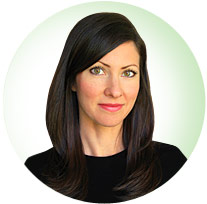 Kelly Brogan, MD is a holistic psychiatrist specialized in the treatment of women across the life cycle, including pregnancy and postpartum. In her practice, and as a mom of a 4 year old and a 20 month old, she focuses on root causes of symptoms and natural treatments. Follow her work here: website, Facebook, Twitter, or sign up for her newsletter.
Kelly Brogan, MD is a holistic psychiatrist specialized in the treatment of women across the life cycle, including pregnancy and postpartum. In her practice, and as a mom of a 4 year old and a 20 month old, she focuses on root causes of symptoms and natural treatments. Follow her work here: website, Facebook, Twitter, or sign up for her newsletter.

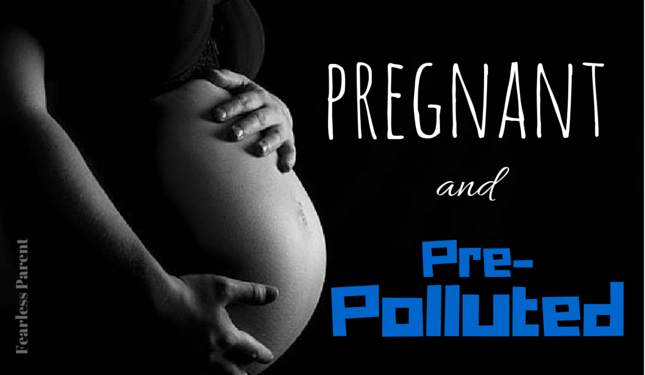
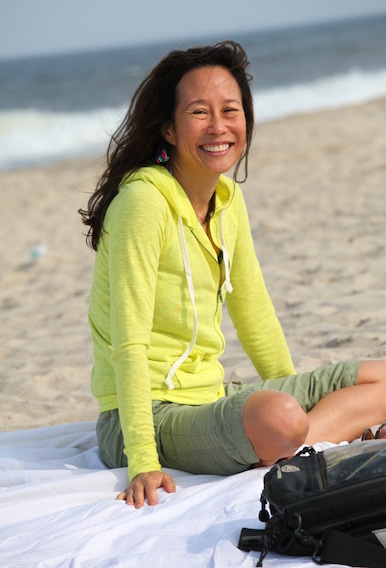

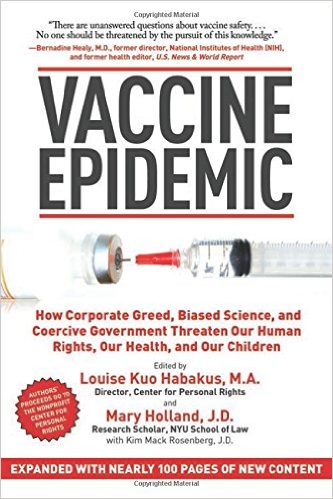




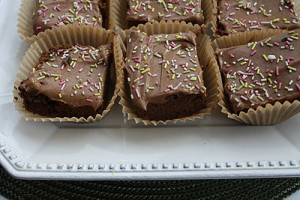

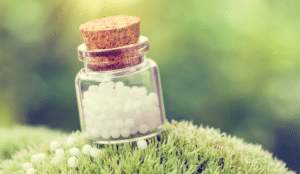

And skip the flu shot please. Read the insert, Category C Vaccine, has not been tested for safety or efficacy in pregnant women, may cause fetal damage and/or reproductive problems.
I use products from the Honest Company http://www.honest.com/1588
Borax is actually quite toxic, as are Method brand products! Do your research, PLEASE, before recommending “safe” products to the public. A safe substitiute for Borax is washing soda or baking soda. And laundry detergent should be singled out for how very toxic the conventional brands such as Tide are, PLEASE avoid these and only use natural detergents such as home made (with NO borax) or brands such as Planet and Country Save.
http://www.ewg.org/guides/cleaners/2507-20MuleTeamBoraxNaturalLaundryBoosterMultiPurposeHouseholdCleaner
Hi Earthmama – thanks for your comments. I am interested in any specific reproductive info you might have on Borax (I love new info on toxic stuff we all think is fine!). My thinking around it is that is is sodium tetraborate, is a boron mineral mined directly from the ground. It is non-carcinogenic, does not bio-accumulate, and does not absorb readily. It is quite alkaline and could be irritating; however. Certainly, I’m not recommending you eat it! I tend to think it is a good substitute for laundry detergent, which as you mentioned is often quite toxic. For more cautious mama’s baking soda or vinegar are great choices. With regard to Method, many of the products are, indeed, quite simply formulated, and they are widely available, which is not the case for smaller companies. There are few companies that are reliable through and through. I’ve found this with Seventh Generation and others, so best to read labels. Thanks!